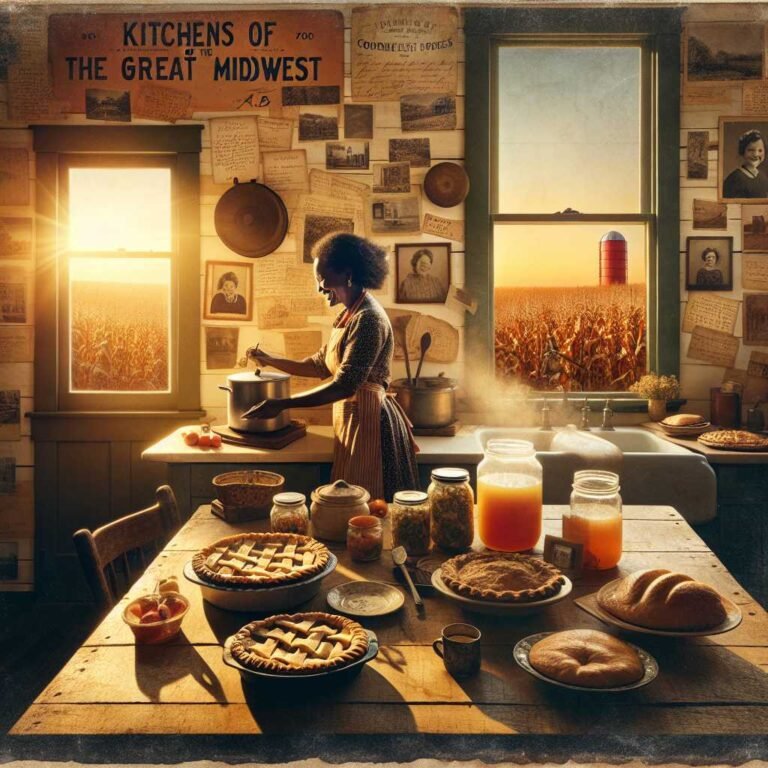Wild Dark Shore (Kindle Edition) by Charlotte McConaghy: Review, Themes, and Why This 2025 Bestseller Belongs on Your List
If you’ve ever finished a novel and felt the world tilt a little—more fragile, more wondrous, more worth fighting for—you already know the charge of reading Charlotte McConaghy. With Wild Dark Shore, she returns at full power, weaving climate tension, family secrets, and a love fierce enough to bruise into a story you won’t forget.
Here’s the setup: a father and his three children tend Shearwater, a tiny island near Antarctica that houses the world’s largest seed bank. Rising seas have pushed everyone else out. A catastrophic storm hits. Then a woman appears, half-dead, on the shore. From that first, cinematic scene, the novel moves like a current pulling you out to deep water—quiet at first, then surging. If that’s your kind of book, keep reading. You’ll find a spoiler-safe review, the themes that make this shine, who should read it next, and a clear buying guide for the Kindle edition.
Curious to dive in today—Check it on Amazon.
A spoiler-safe review: What Wild Dark Shore is really about
On the surface, this is a survival story. Shearwater is remote, cold, and beautiful in that austere way that makes your bones ache. The Salt family keeps the lights on and the vault sealed against the wet, protecting seeds that could reseed the world if the worst of climate collapse unfolds. Into their isolation comes Rowan, a stranger with a complicated past, who’s tougher than she looks and less honest than she first seems. Storms tighten. Radios fail. A grave appears. Trust becomes currency—and weapon.
But this isn’t just a thriller with big waves. McConaghy’s magic lies in how she stitches the personal and the planetary. The island’s weather mirrors the family’s emotional climate. The seed bank, an archive of life, becomes a symbol for all the choices we make to protect the future. And Rowan’s guarded heart? It’s the human side of resilience—soft, breakable, stubbornly hopeful.
Why that matters: climate fiction can feel preachy or hopeless. Wild Dark Shore is neither. It holds grief and beauty in the same hand. It asks what we owe to each other when the world is fraying, and it refuses to give up on love—not the sentimental kind, but the kind that shows up with grit and consequence.
If this sounds like your kind of literary escape, See price on Amazon before you start the first chapter.
How it keeps you turning pages (without cheap tricks)
- The setting is a character. Shearwater’s cliffs, gulls, and black water press in—ever-present, always changing.
- The stakes are both intimate and global. Will this family mend or fracture? Will the vault survive the storms? Those questions keep you locked in.
- The tension builds cleanly. McConaghy uses small ruptures—missing gear, dark looks, withheld stories—to escalate toward a storm you can feel under your skin.
If you’ve read Migrations or Once There Were Wolves, you know her pace: a slow-burn ache, then a quickening heartbeat, then a drop into revelations that feel both surprising and inevitable. That pattern returns here, honed and intentional.
Charlotte McConaghy’s signature: climate grief, ferocious love, and a wild sense of place
McConaghy writes like a naturalist-poet with a camera in her hands. The prose is spare, lyrical, and precise—no flab, no filler. You’ll taste salt air and hear ice cracking. You’ll meet birds by their names and storms by their shapes. If you’ve ever wondered why people call her nature writing “evocative,” this book shows it in scene after scene.
- Climate grief is the undertow. It’s not background noise; it’s a force that shapes choices, relationships, and risk.
- Love is ferocious. Parents and children. Lovers struggling to trust. People choosing to stay when it would be easier to leave.
- The ethics are thorny. Who gets to decide what to save? What will you risk for the possibility of a future?
For context on how seed banks operate—and why they matter—this novel invites you to explore the real-world Svalbard Global Seed Vault and its mission through the Crop Trust. And to understand the rising seas that threaten Shearwater’s shores, NASA’s overview of sea-level change offers clear, current data.
When the mood for an atmospheric, high-stakes read hits, you can Shop on Amazon for the Kindle edition in seconds.
Characters that stick: the Salts and Rowan
The best novels give you people who feel real enough to worry about. That’s true here.
- Dominic Salt: A caretaker, a father, and a keeper of secrets. Duty has calcified into something harder than he intends.
- The Salt children: Each one bears the imprint of the island—and of their father’s choices—differently. They’re brave, resourceful, and often at cross-purposes.
- Rowan: Self-protective, haunted, magnetic. She wants to belong, but belonging has always cost her too much.
What makes them memorable isn’t just backstory. It’s the way their needs collide: protection versus independence, truth versus safety, love versus survival. As storms roll in, those collisions sharpen into decisions you’ll argue with in your head—exactly what you want for book clubs and buddy reads.
Theme deep-dive: trust, secrecy, and the weight of inheritance
Trust drives this book. Who earns it? Who withholds it? Who breaks it to protect someone else? The radios go down, a grave is dug, and suddenly every character’s internal compass is tested. In the background, the seed bank looms as an inheritance—literal and moral. The Salts guard it for a world that might not thank them. Rowan shows up as a disruptor, yes, but also as a mirror for everything the Salts can’t say.
Let me explain why that resonates: in an era of eroding institutions and climate anxiety, the idea that ordinary people become stewards of extraordinary futures is quietly radical. Trust becomes not just personal, but a bridge to the future—built one hard choice at a time.
Who will love Wild Dark Shore?
- Fans of literary thrillers with heart.
- Readers of climate fiction who want hope and momentum—not lectures.
- Book clubs looking for layered themes and vivid atmosphere.
- Anyone who loved Migrations or Once There Were Wolves and wants that same lyrical punch with fresh stakes.
If Emily St. John Mandel’s blend of beauty and dread speaks to you (you can find more about her work here: Emily St. John Mandel), McConaghy hits a kindred note—though her gaze is more feral, more ocean-fixed.
For more on McConaghy’s backlist and biography, browse her publisher profile at Penguin Random House. And to see how mainstream critics are discussing climate-inflected fiction, check the latest at the New York Times Book Review and Washington Post Books.
The Kindle Edition: formats, features, and smart buying tips
If you’re debating where to read, the Kindle edition is built for this kind of immersive, atmospheric novel. Here’s what to know:
- Enhanced Typesetting and adjustable fonts make long sessions easy on the eyes.
- X-Ray lets you track characters and locations without leaving the page—handy in a multi-POV story.
- Whispersync for Voice (when paired with the Audible version) lets you switch between reading and listening without losing your place.
- Page Flip helps you revisit earlier scenes to catch foreshadowing without breaking the flow.
- Word Wise and built-in dictionary support are great for nature terminology.
Buying tips: – If you like to annotate, the Kindle Scribe’s stylus makes margin notes feel natural. – Prefer to share? The Family Library can let another household member read your copy. – If you switch devices often, enable automatic book updates in your Amazon settings to get any post-launch corrections.
For the smoothest setup with Kindle or Audible, Buy on Amazon and enable Whispersync at checkout.
Tone and pacing: a storm that sneaks up on you
McConaghy writes in clean, rhythmic lines that invite you to slow down—then she tightens the screws. The early chapters are quiet: mending equipment, scanning skies, small kindnesses that feel fragile. As secrets surface, the sentences sharpen, and the book accelerates. Crucially, the tension feels earned. No contrived twists. Just choices, made in conditions that test what love can endure.
Here’s why that matters: when craft supports emotion, you believe the risks. You care more. And when the ending hits—and it does—you feel relief and ache in the same breath.
Memorable moments readers will underline (no spoilers)
- Scenes where the island feels sentient, as if it’s watching and weighing the people on it.
- Tender flashes between characters who can’t quite say what they need to say.
- Images that braid the intimate and the epic: a hand on a door, a gale screaming around the eaves.
- Revelations that force you to re-read earlier pages with new eyes.
If you’re building your 2025 reading list, Shop on Amazon to get the Kindle edition.
Book club notes: themes and questions to spark a great discussion
Wild Dark Shore is catnip for book clubs because it balances plot with ideas. Consider these angles:
- The ethics of guardianship: Who owns the future stored in a seed bank?
- Survival versus community: When resources are limited, how do relationships shift?
- Secrecy as protection: When does withholding information become harm?
- Family as ecosystem: What sustains it, and what threatens its biodiversity?
- Climate hope: What does “hope” look like when the world is changing faster than we are?
If you’re picking for a book club and want quick access, View on Amazon to see formats and delivery options.
How it fits into the climate fiction canon
Climate fiction isn’t a monolith; it ranges from dystopia to quiet realism. Wild Dark Shore sits in the lineage that treats the natural world as both setting and moral field, closer to “climate literary thriller” than sci-fi. It nods to real-world environmental institutions—like the global seed vaults stewarded by the Crop Trust—and frames climate change not as an abstract headline but as an intimate force shaping a family’s daily life.
If you want to ground your reading in facts while you read, the FAO’s biodiversity resources and NASA’s sea-level insights make excellent companion materials.
Content notes (spoiler-light)
- Emotional intensity: grief, isolation, found family.
- Mild-to-moderate peril related to storms and remote living.
- Thematic content around loss and secrecy.
- Romance threads are present but never overwhelm the core survival story.
Bottom line: Should you read it?
Yes—if you want a novel that feels both intimate and vast, that respects your intelligence, and that leaves a mark. Wild Dark Shore is the rare bestseller that earns its status. It’s propulsive, humane, and written with a biologist’s eye and a poet’s ear. You’ll close it feeling a little changed, and a lot more alert to the wild dark edges of the world.
If you enjoy thoughtful, emotionally resonant reviews like this, consider subscribing for more author deep-dives, book club guides, and high-performing Kindle picks.
FAQ: Wild Dark Shore by Charlotte McConaghy
Q: Do I need to read Migrations or Once There Were Wolves first? A: No. Wild Dark Shore stands alone. If you’ve read her earlier novels, you’ll recognize thematic through-lines—climate grief, animal-human entanglements, ferocious love—but the characters and plot are new.
Q: What genre is this? Literary fiction, thriller, or climate fiction? A: All three. It reads like literary fiction with a thriller’s pulse and the thematic spine of climate fiction. Expect atmosphere and emotion alongside genuine suspense.
Q: How heavy are the climate themes? A: Present and meaningful, but never didactic. McConaghy builds tension from lived details—changing seas, fragile infrastructure, the ethics of preservation—rather than lectures.
Q: Is there an audiobook and is Whispersync available? A: The Kindle listing typically indicates an Audible edition and Whispersync compatibility; if enabled, you can switch between reading and listening without losing your place.
Q: Is this a good pick for book clubs? A: Absolutely. The novel’s moral questions, complex relationships, and vivid setting spark layered conversations. It also balances heart and stakes, which keeps discussions lively.
Q: Any content warnings I should know about? A: Expect themes of loss, isolation, and survival in harsh conditions, plus tension involving secrets and trust. Violence is present but restrained and purposeful.
Q: How accurate is the seed bank concept? A: Very plausible. Real-world seed vaults—like the Svalbard facility backed by the Crop Trust—preserve genetic diversity as a buffer against crises, and the novel reflects that mission with care.
Discover more at InnoVirtuoso.com
I would love some feedback on my writing so if you have any, please don’t hesitate to leave a comment around here or in any platforms that is convenient for you.
For more on tech and other topics, explore InnoVirtuoso.com anytime. Subscribe to my newsletter and join our growing community—we’ll create something magical together. I promise, it’ll never be boring!
Stay updated with the latest news—subscribe to our newsletter today!
Thank you all—wishing you an amazing day ahead!
Read more related Articles at InnoVirtuoso
- How to Completely Turn Off Google AI on Your Android Phone
- The Best AI Jokes of the Month: February Edition
- Introducing SpoofDPI: Bypassing Deep Packet Inspection
- Getting Started with shadps4: Your Guide to the PlayStation 4 Emulator
- Sophos Pricing in 2025: A Guide to Intercept X Endpoint Protection
- The Essential Requirements for Augmented Reality: A Comprehensive Guide
- Harvard: A Legacy of Achievements and a Path Towards the Future
- Unlocking the Secrets of Prompt Engineering: 5 Must-Read Books That Will Revolutionize You







